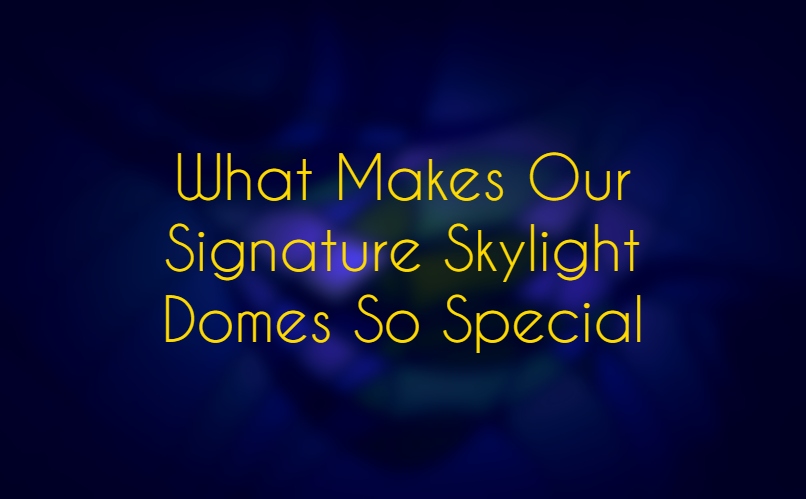Domes have a very special quality and significance in architecture.
In ancient Greece, Rome and Persia, their circular shape represented the heavens and eternity. At the famous Pantheon in Rome, at the apex of the dome is a circular opening known as an “oculus” (which means “eye”) that allows light to shine through. The penetration of light signified a “divine” presence.
This also denoted a protective association with domes, as domes have an encompassing nature, and because of their placement and location above one, they exude a sort of quality of “watching over” and shielding one against harm, negativity or undersirable forces. Even the Hebrew term “kippah” (the skullcap or yamulke worn in the Jewish faith) literally means “dome”.
Because of the sublime aesthetic characteristic of stained/leaded glass, since its revival in the nineteenth century into the contemporary world, it almost seems natural that it would evolve into a skylight dome in design.
As they are quite technical and difficult to design and construct properly, and as there are very few artisans capable of doing so, stained/leaded glass skylight domes are considered quite prestigious. To have one is a distinguishing phenomenon.
Simon Simonian is quite renowned for his incomparable stained/leaded glass skylight domes, and for a reason.
Not only does he possess architectural and construction knowledge, experience and proficiency in addition to his fine art talent, but he has a very safeguarded proprietary method for achieving such structures which cannot be duplicated. The secrets of his trade are so intrinsic that they cannot even be taught or communicated even if he wanted to.
Let’s examine the fact that a dome is an entirely ROUND structure. However, one comprised of leaded glass is factually composed of individual pieces of glass that are FLAT. Therefore, the entire structure should look somewhat faceted or angled, technically speaking, such as with geodesic domes.
But the appearance of Simonian’s domes are round. There is fluidity in the lines, which make them appear curvilinear.
This characteristic is vital, for it’s the roundness which imparts the aesthetic integrity.
This curvilinear appearance is actually an optical illusion. How it is achieved remains not to be known intellectually or analytically, but to be experienced aesthetically, possibly even transcendentally, by the viewer.
A stained/leaded glass skylight dome is a statement. It is grand and majestic but not in an overbearing manner, but in a stately and sophisticated manner. It is bold, yet subtle. It is tangible yet otherworldly. It is a crowning jewel and a highlight, a focal point but does not detract from the integrity of its environment, but instead enhances it greatly.
In estates, stained/leaded glass skylight domes are usually located in the foyer (entry), but can be incorporated into most types of rooms.
They are composed of a thousand or several thousand individual pieces of glass. One of our largest domes was comprised of nearly 10,000 individual pieces of glass! It spans 20 feet in diameter and has a height of 5 feet, hovering 20 feet above in a grand entrance to an estate in Bel Air Crest, California.
One uncommon but intriguing variation is the inverted dome, where its three-dimensional orientation is convex as opposed to concave. Simonian has even designed and constructed a hybrid dome, having incorporated an inverted smaller one into the apex of a larger dome.
One extremely rare structure is the oval-shaped dome. These are considered architectural marvels. Simonian is capable of and has designed and constructed such domes, one of the very few people in the world to have done so.
Progressive Art Stained Glass Studio is one of the world’s foremost studios in stained/leaded glass skylight domes.


